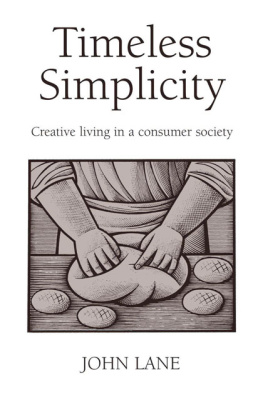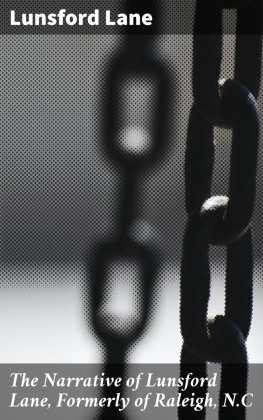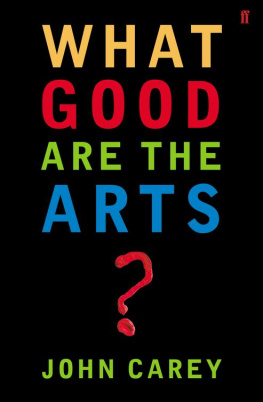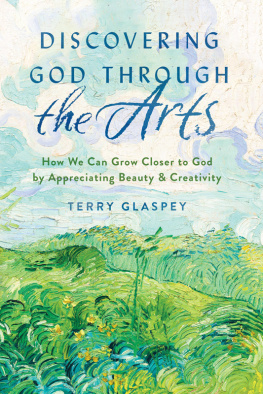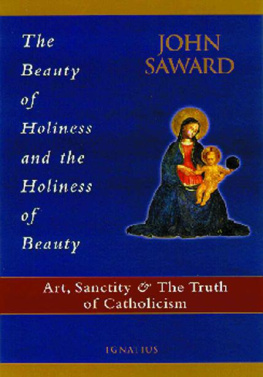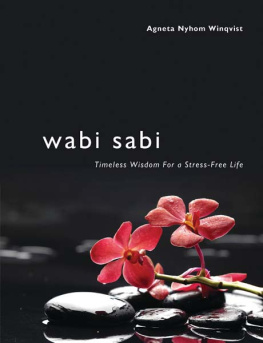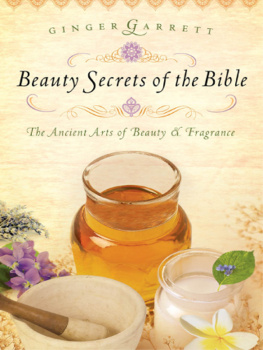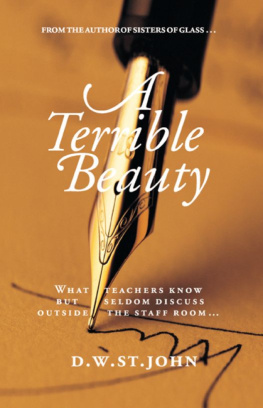John Lane - Timeless Beauty in the arts and everday life
Here you can read online John Lane - Timeless Beauty in the arts and everday life full text of the book (entire story) in english for free. Download pdf and epub, get meaning, cover and reviews about this ebook. year: 2016, publisher: UIT Cambridge Ltd., genre: Religion. Description of the work, (preface) as well as reviews are available. Best literature library LitArk.com created for fans of good reading and offers a wide selection of genres:
Romance novel
Science fiction
Adventure
Detective
Science
History
Home and family
Prose
Art
Politics
Computer
Non-fiction
Religion
Business
Children
Humor
Choose a favorite category and find really read worthwhile books. Enjoy immersion in the world of imagination, feel the emotions of the characters or learn something new for yourself, make an fascinating discovery.
Timeless Beauty in the arts and everday life: summary, description and annotation
We offer to read an annotation, description, summary or preface (depends on what the author of the book "Timeless Beauty in the arts and everday life" wrote himself). If you haven't found the necessary information about the book — write in the comments, we will try to find it.
John Lane: author's other books
Who wrote Timeless Beauty in the arts and everday life? Find out the surname, the name of the author of the book and a list of all author's works by series.
Timeless Beauty in the arts and everday life — read online for free the complete book (whole text) full work
Below is the text of the book, divided by pages. System saving the place of the last page read, allows you to conveniently read the book "Timeless Beauty in the arts and everday life" online for free, without having to search again every time where you left off. Put a bookmark, and you can go to the page where you finished reading at any time.
Font size:
Interval:
Bookmark:
In beauty may I walk
In beauty may I walk
All day long may I walk
Through the returning seasons may I walk
On the trail marked with pollen may I walk
With grasshoppers about my feet may I walk
With dew about my feet may I walk
With beauty may I walk
With beauty behind me may I walk
With beauty above me may I walk
With beauty below me may I walk
With beauty all around me may I walk
In old age wandering on a trail of beauty, lively may I walk
In old age wandering on a trail of beauty, living again may I walk
It is finished in beauty
It is finished in beauty
A NAVAJO INDIAN PRAYER
For Kathleen Raine
I want to thank those friends who read my manuscript: Satish Kumar, who gave detailed comments on a early draft; John Moat, who made broader comments and suggestions; and Glenn Storhaug, who edited the final text. The suggestions made by each of you were essential to the improvement of the book. I am also grateful to Eliseo Lagano, Jeff Hunter and Philip Mann for general discussions about the subject of this book, to John Danvers for his comments on certain chapters and to Chris Coulson, Brian Goodwin, Stephan Harding, Jim Lovelock and Brian Nicholson for advice with . Harland Walshaw, Peter Burton and Adam Lane also gave invaluable assistance.
Finally I owe thanks to my publisher, John Elford, for his great patience and detailed corrections, to Susan Wightman of Libanus Press for her beautiful book design, and to two remarkable women: my wife Truda, who provided emotional and material support throughout the time it took to write this book, and Kathleen Raine, who gave unfailing encouragement and advice all the way through the books gestation and production. I also owe her a particular debt of gratitude for writing its Foreword.
Of Platos three verities, the Good, the True and the Beautiful, none can be understood in terms of the materialist values of modern Western civilization, and beauty least of all. Truth can be confused with fact, with the measurable and quantifiable aspects of what is currently called the real world. The Good may be seen as actions or events leading to desirable results; but Beauty cannot be quantified or measured in material terms. Perhaps it can be seen as corresponding to the sexually desirable, and as such can sell newspapers, but even in that form remains immeasurable and indefinable. Keats (following and paraphrasing Plotinus) wrote:
Beauty is truth, truth beauty, that is all
Ye know on earth, and all ye need to know.
The heart responds to these words, which describe beauty as in the highest place. The saying that Beauty is in the eye of the beholder is quite inadequate, for all Platos verities are realities of the mind, of consciousness itself, which is in its nature immeasurable. Keats saw it as the highest valuebecause its reality can be known only to the soul. We may see it as the divine imprimatur or as the divine signature itself. In a world that denies the existence of the soul, and indeed of the divine order, this necessarily involves the rejection of the Beautiful as not true to life, which is seen in material terms as nasty, brutish and short.
And yet throughout the world beauty is to be found in the humblest crafts, as in the highest expressions of human aspiration. Water-pots, cooking vessels, the walls of houses, garments, and the human body itself, are adorned with depictions of plants and animals, with fantastic and elaborate inventions of the human imagination. The human instinct is to adorn and beautify whatever is the work of human hands. Only since the industrial revolution, which has replaced the work of hand and eye with the mindless artefacts of machines, has the signature of beauty been absent.
Thus it has come about that beauty is no longer discussed or spoken of in relation to the arts; is no longer considered essential, or even desirable. I think it was in the twenties of the last century that the term functional was introduced as the most desirable quality of our utilitiesfurniture and buildings, and whatever we use in daily life. Decoration was banned, rooms and furniture were painted white, the rectilinear replaced the grace of curves and archesflat roofs, plain doors and windows. I remember when my College (Girton) replaced some elegant tinted glass from the windows of the library with colourless utilitarian glass; to be reproached by John Betjeman, who looked on the Modern Movement with disfavour.
There is no evidence that beauty benefits people materially in any way, and yet it seems that it remains a need after all the conveniences and benefits of technologymass-production, washing-machines, fast food and the rest. People are unhappy in a beautiless world, in ugly cities lit with neon lighting, in high-rise blocks of flats without trees or gardens or fountains or birds circling our skies. That beauty is a need cannot be proved, but it is everywhere felt, and may be one of the causes of the widespread neurotic illness that afflicts modern urban man. Primitive societies, lacking these benefits, have nevertheless found happinessLaurens van der Post describes how the Bushmen of Africa, who have no property, feel themselves in harmony with their environment, with earth and sky, and the living creatures around them.
Beauty is of many kinds and at many levels. Nature is not egalitarian, or what is the significance of evolution? Still less so is the human spirit, or of what value is aspiration? Beauty is heirarchic. We may speak of a footballer scoring a beautiful goal, but that is not of the same order or degree as Nijinsky dancing Le Spectre de la Rose. There is beauty in many of the songs of the Beatles, but again Monteverdis Incoronatione di Poppaea or Schuberts Winterreise belong to a higher level altogether, as does Indian classical music of the oral tradition. It is to John Lanes credit that he responds to beauty of many levels and degree, and speaks warmly of Elvis Presleys singing; he goes out of his way to avoid comparative value judgments. However, one thinks of the Kabbalistic Tree with its four worlds and ten sephiroth as a heirarchic structure which had its equivalents in all traditional cultures, in the form of pantheons, heirarchies of angels, and the like. This clearly corresponds to a universal realization that there are kinds and degrees of value. John Lane does not endorse Bernard Berensons view that the head of an angel from Leonardos Virgin of the Rocks might be described as the most beautiful drawing in the world and himself prefers to avoid making such comparative value judgments.
It is John Lanes especial gift to be able to read works of art from different periods and different cultures and kinds, and to be able to communicate the delight he finds in them. He was himself trained as an artist and most of his examples are taken from the visual arts, of which he has a wide knowledge, drawn not only from European but also from Far Eastern, Indian, Islamic and Native American art. His commentaries are of praise and gratitude rather than the negative censorious criticism which has become fashionable in recent years. He has a fine gift of empathy which he communicates to us. Nor does he forget the sacrificial cost to the artist at which great work is produced.
Font size:
Interval:
Bookmark:
Similar books «Timeless Beauty in the arts and everday life»
Look at similar books to Timeless Beauty in the arts and everday life. We have selected literature similar in name and meaning in the hope of providing readers with more options to find new, interesting, not yet read works.
Discussion, reviews of the book Timeless Beauty in the arts and everday life and just readers' own opinions. Leave your comments, write what you think about the work, its meaning or the main characters. Specify what exactly you liked and what you didn't like, and why you think so.



